Time is our checkerboard of dark and bright with peace and turmoil, grieving and delight. And in the end, there is no more time to tell to make amendments; so love and use time well. E. Cartwright Hignett
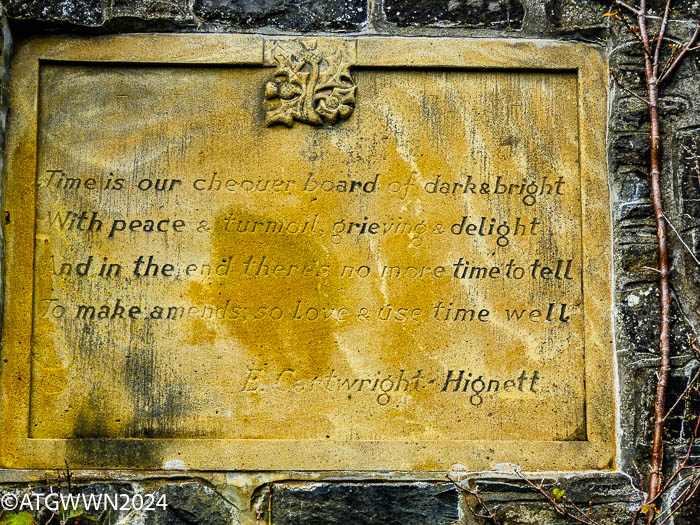
Portmore Garden is south of Edinburgh, Scotland, in the Peebleshire and Tweeddale area near Peebles. How could anything not be magical with names such as this? Magic is just what we found. A grand estate began in the early 1800s, looking over green hills and farm fields. Serendipitously, we arrived on an Open Garden Day with great weather, live music, and a retirement celebration for Ken, who served as head gardener for 36 years at Portmore. The estate owners had lived there for four decades and renovated the house and garden. Now, they were reluctantly selling due to health concerns.
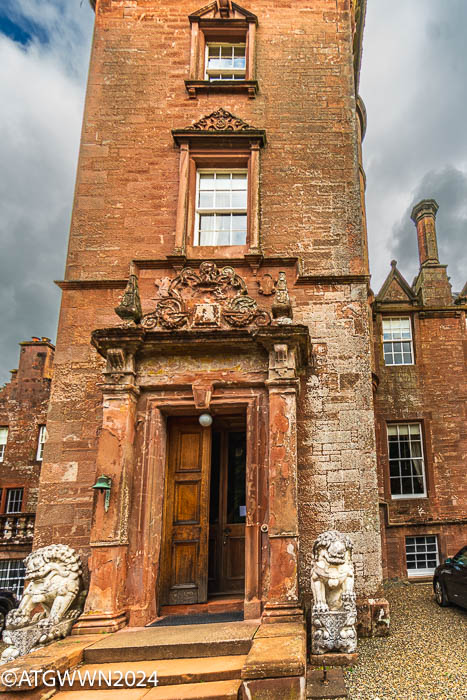
Weathered Fu Dogs flank the grand red stone mansion with a towering entrance, though it sported a contemporary touch with a post-it note giving directions for an Amazon delivery. 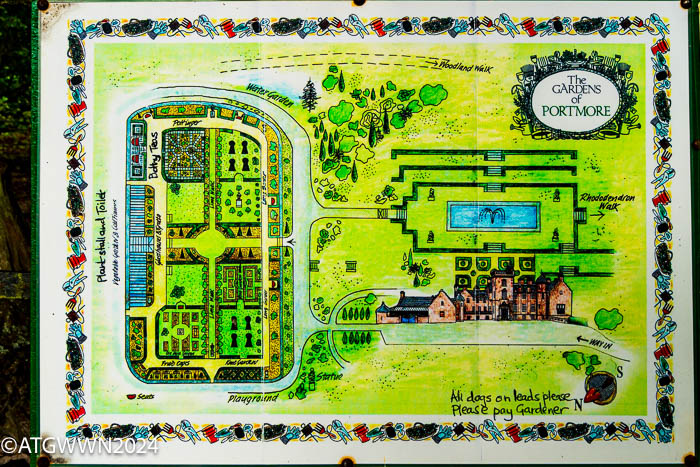 Signs directed us toward the garden path north of the house. The curving gravel path was shaded by flowering trees and flanked by shrubs. We arrived at a gated, walled garden opening onto lush lawn pathways, hedges, topiary, and flowers.
Signs directed us toward the garden path north of the house. The curving gravel path was shaded by flowering trees and flanked by shrubs. We arrived at a gated, walled garden opening onto lush lawn pathways, hedges, topiary, and flowers.
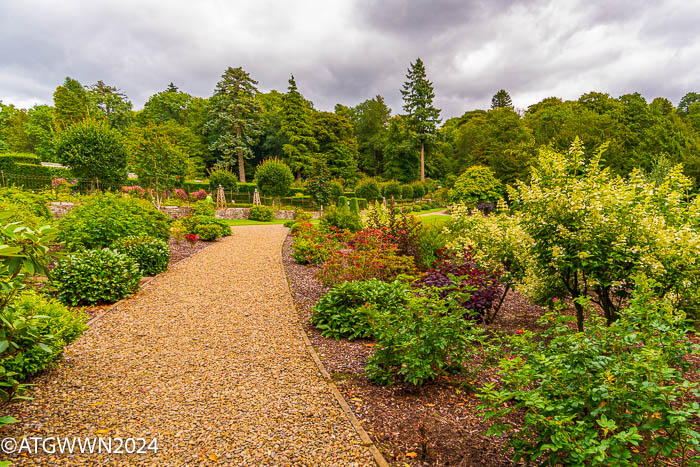
This glorious garden revealed itself room by room, eight distinct but symmetrical spaces with open lawns, formal topiary, and trees.
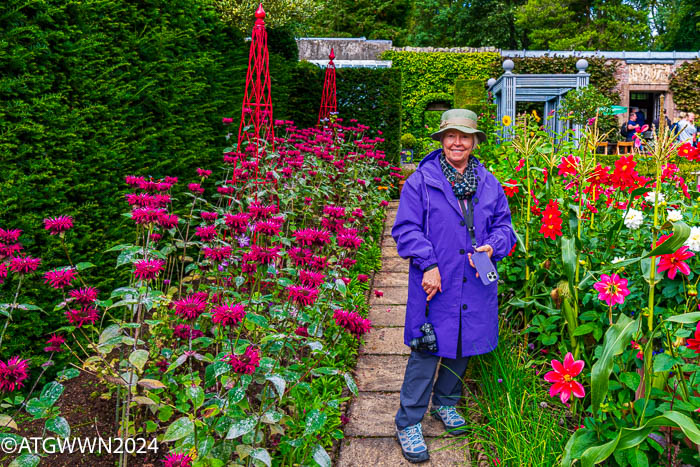
Colorful garden displays mixing rainbow chard, purple kale, and red dahlias interplanted with the corn silks fluttered among the blooms.
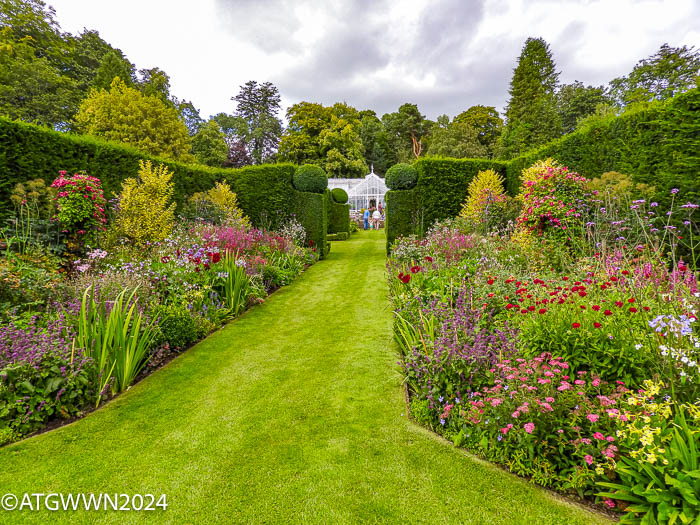
Double herbaceous borders is a phrase I have often read in describing garden design; here, I walked through a glorious length of colorful perennial blooms flanking both sides of the deep green lawn pathways—my moment of luxuriating in a double herbaceous border. The central path led to the Victorian-style conservatories.  This space was the highlight of the visit for me as splashes of mauve, lavender, purple, fuchsia, and all shades of pink were on display. In my world, there is an overabundance of red geraniums; here were pelargonium (a close relative of geranium) in colors I had never seen before, such as purple and white, claret, and combinations of all.
This space was the highlight of the visit for me as splashes of mauve, lavender, purple, fuchsia, and all shades of pink were on display. In my world, there is an overabundance of red geraniums; here were pelargonium (a close relative of geranium) in colors I had never seen before, such as purple and white, claret, and combinations of all.
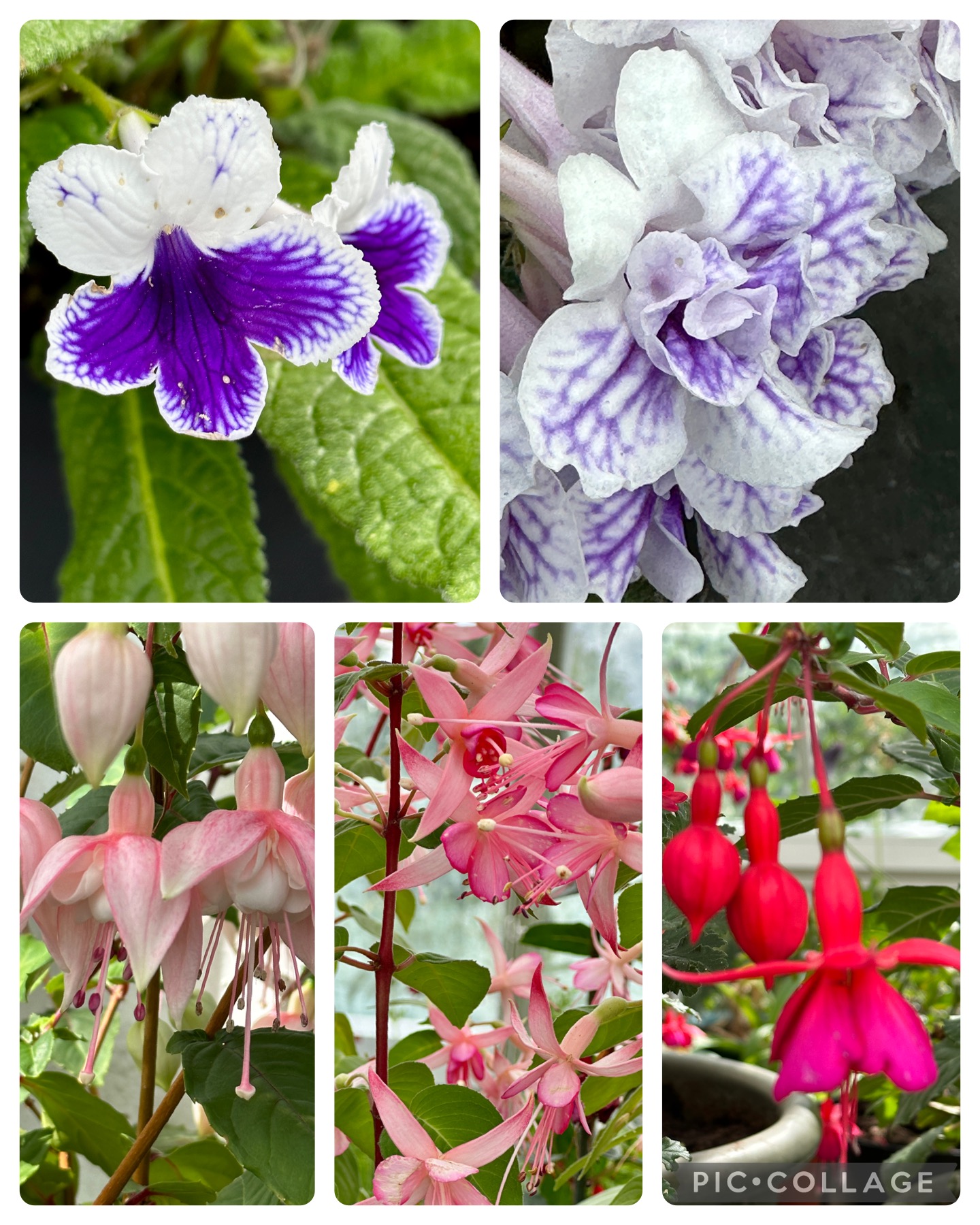
Another area of the conservatories was dedicated to fuchsia. My first introduction to fuchsia flowers was in an old Irish cemetery decades ago, where enormous wild bushes grew. Since then, I’ve lusted after it everywhere it grows. There are now 110 recognized varieties, and none will survive in my garden. Fuchsia is both the plant variety and the color. Fuchsia is a hard color to define; it is sometimes considered magenta but is described as an intense pinkish, purply shade. The complex blossoms have been bred into combinations of deep purple, white, intense pink, and red or found in all pale pink petals.
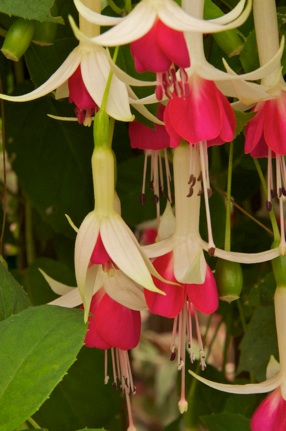
I have always thought the red and white ones looked like toy soldiers. A room filled with fuchsias is my idea of paradise.
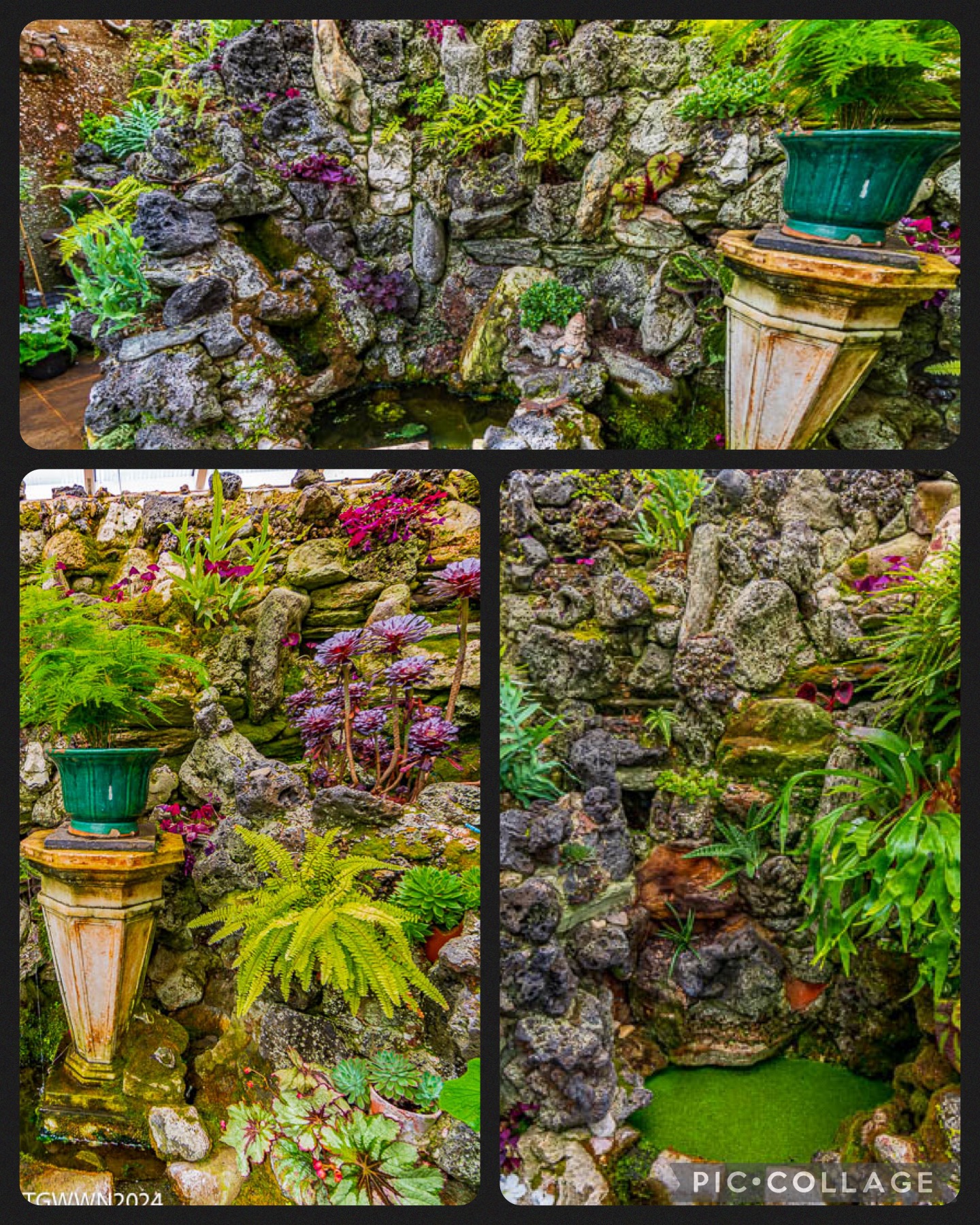
Also in the conservatories is an Italianate grotto with water dripping down textured rocks, chilling the space. Planted with varieties of ferns, the scent of nearby potted stargazer lilies filled the air. The display of plants in these linked conservatories was a work of art.
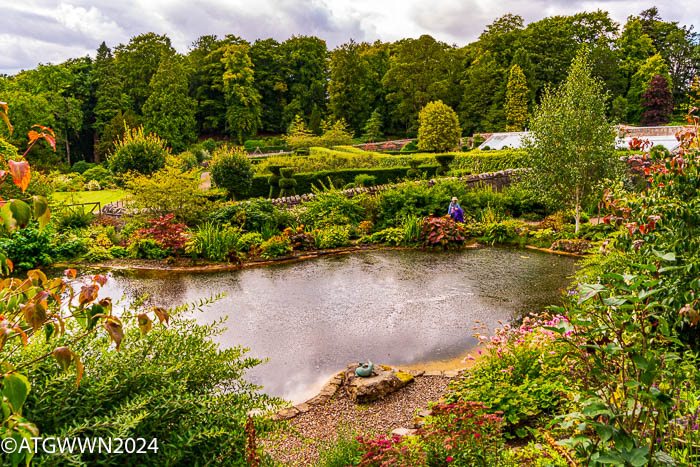
I could barely pull myself back outside to explore the path through the Water Garden filled with late summer roses, swirling parterres, and the topiary. A long axis of pleached linden trees (i.e. tightly trimmed) and an alley of glorious green was just the walk to allow me to quiet my mind before I found the following unique feature.
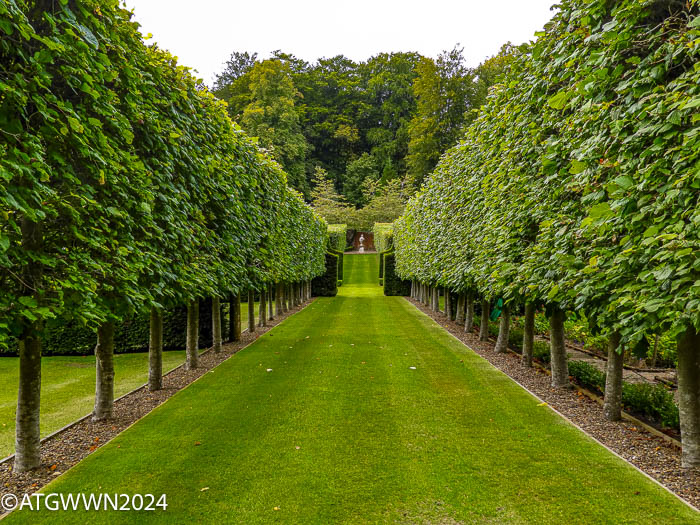
The walled garden has four (5’tall and wider) large wire fruit baskets to protect the berries from the birds!
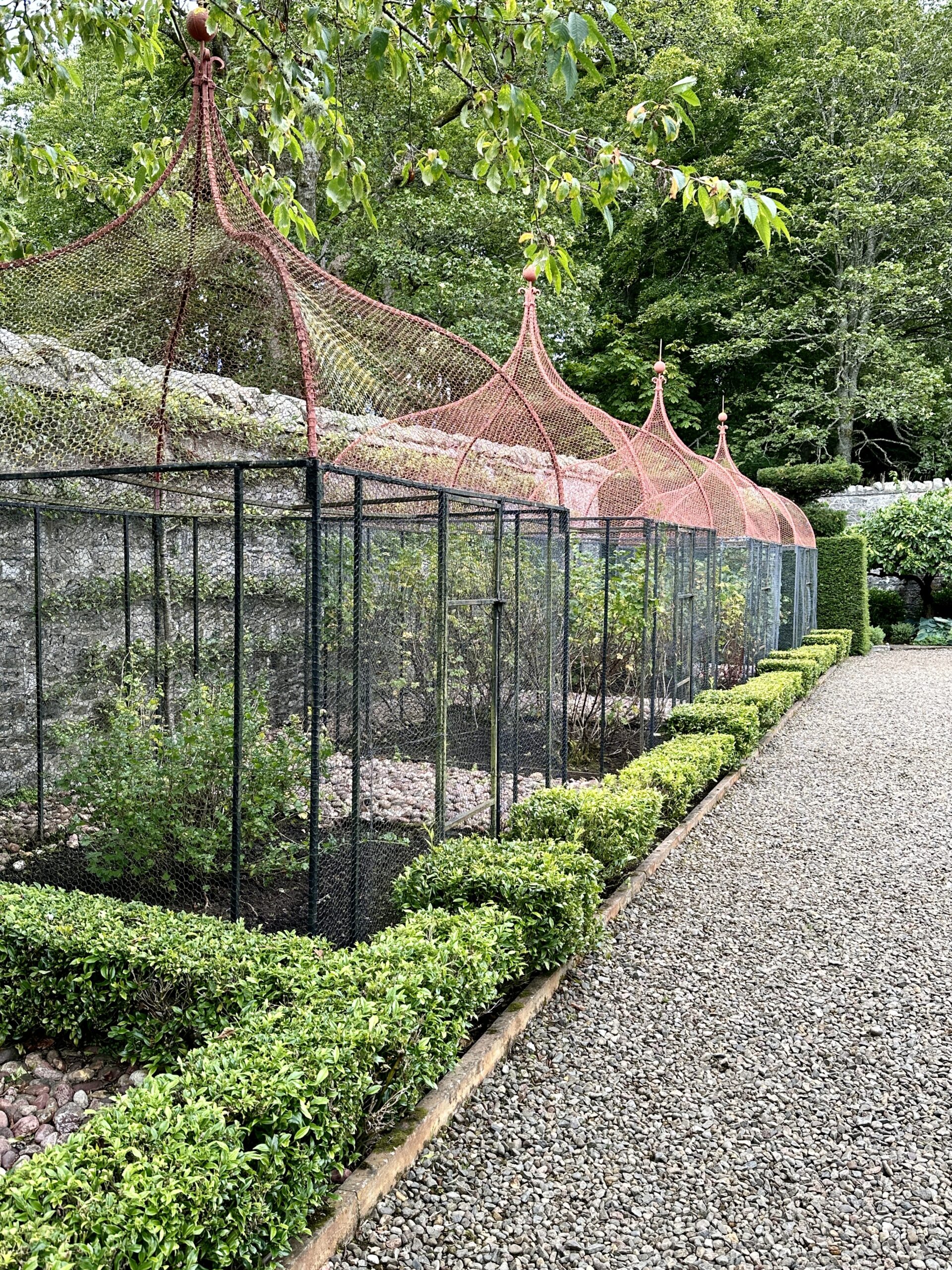
During the several hours we spent visiting the garden, I was always close to an artfully placed bench tucked in just the perfect spot to enjoy a view.
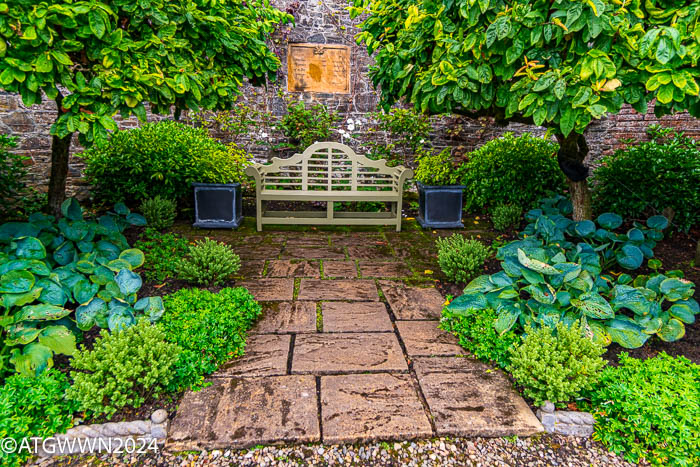
Behind the conservatories are vegetable gardens, cold frames, and hoop houses to extend the growing season and provide food and flowers for the estate. An orchard of peaches, pears, apples, plums, cherries, and apricots grows here. In the Victorian age and beyond, growing one’s food was essential. The climate here includes battering winds, snow, and an occasional hard frost in May. The hedges of yew help protect the plants in the formal garden and provide green for the long winters.
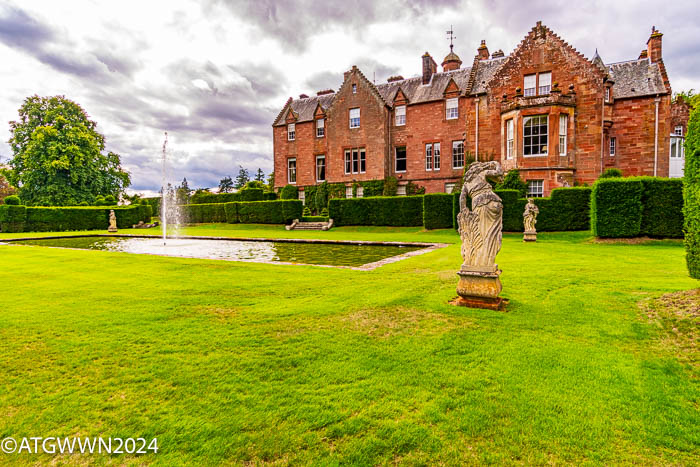
The party was winding down, and it was time to go. The gardener is retiring, the owners are selling, the garden was perfect, and I was there. Often, in a garden, we may be all alone; here we were at a party. There are many gardens where I may return and find it predictably excellent, but this visit to Portmore was ephemeral; it will never be just like this again. Magical.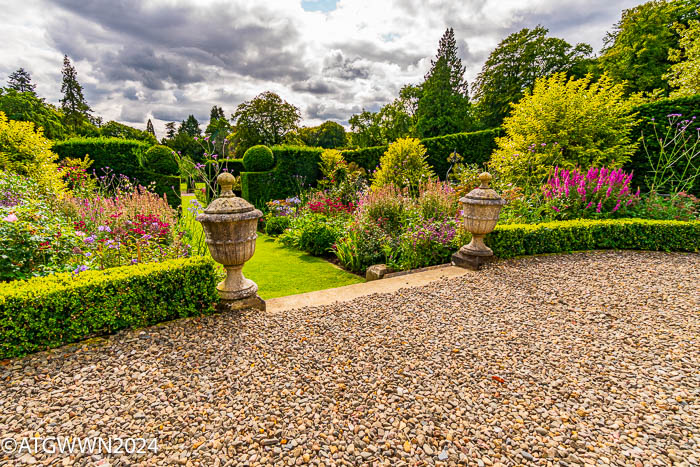
More Photos folow
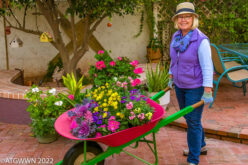
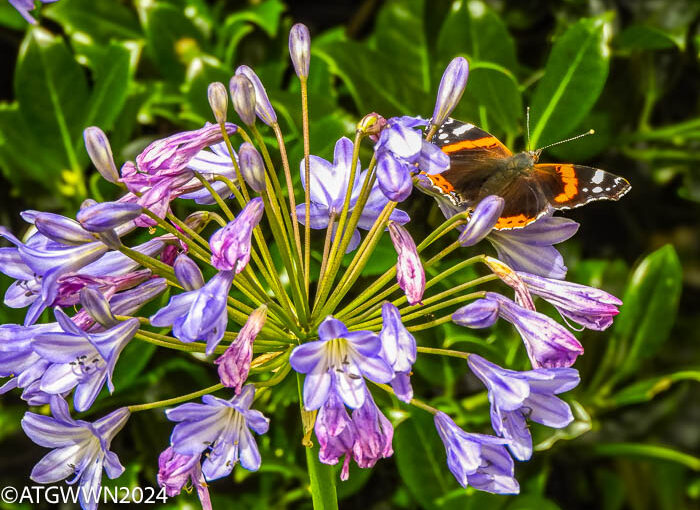
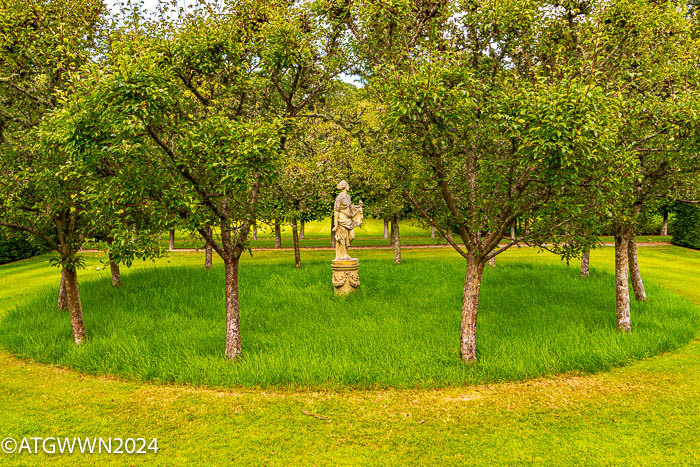
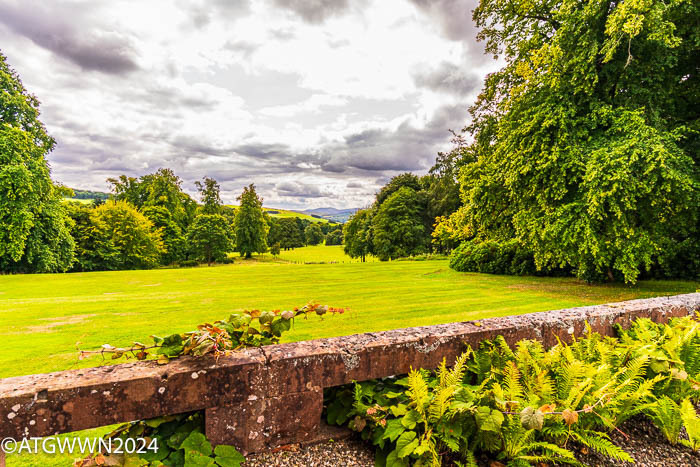
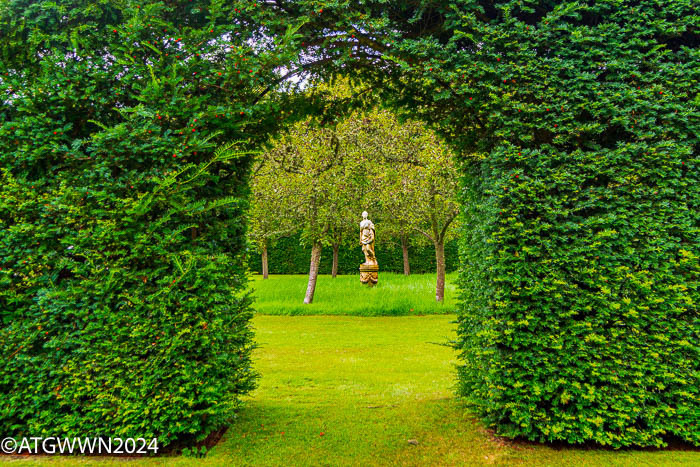
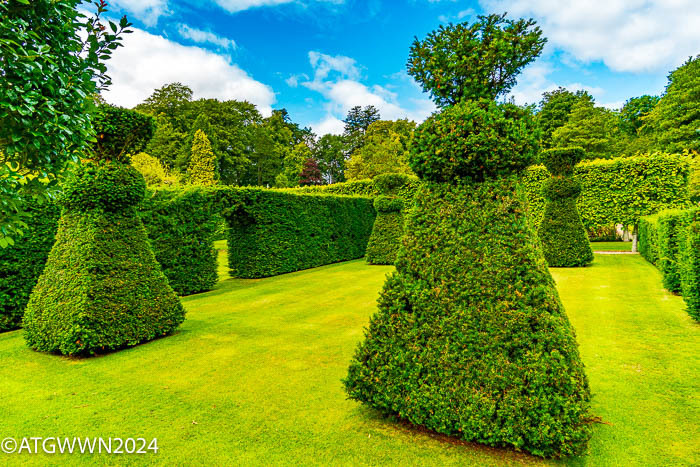
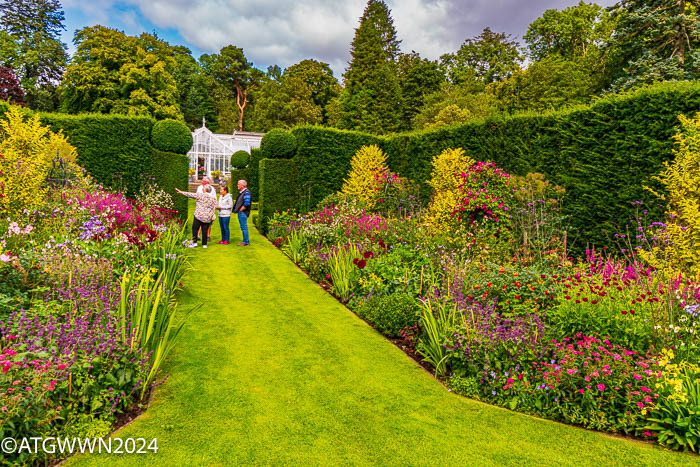
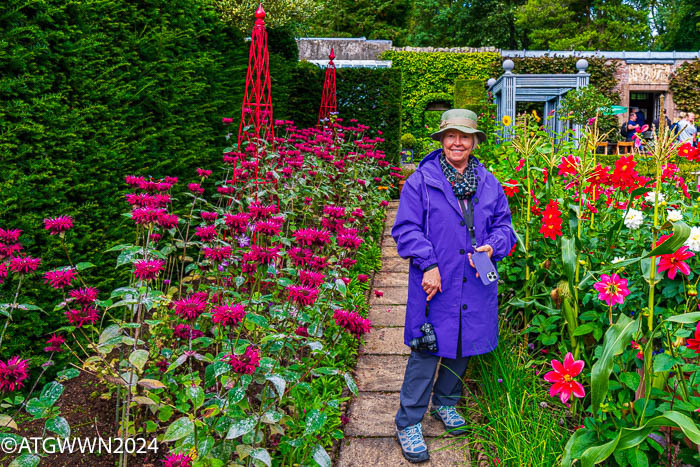
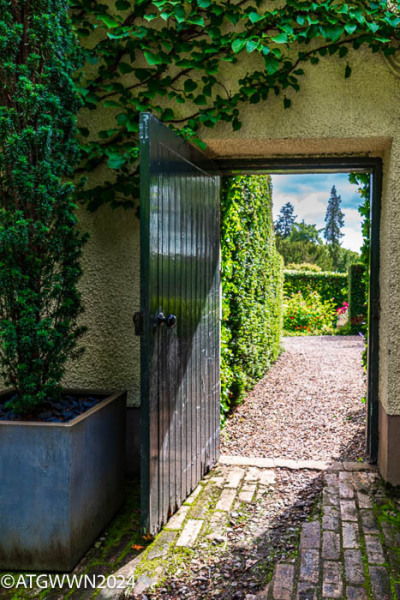
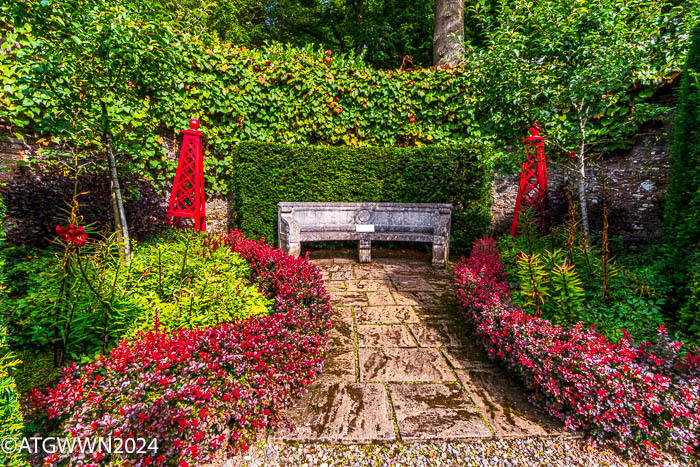
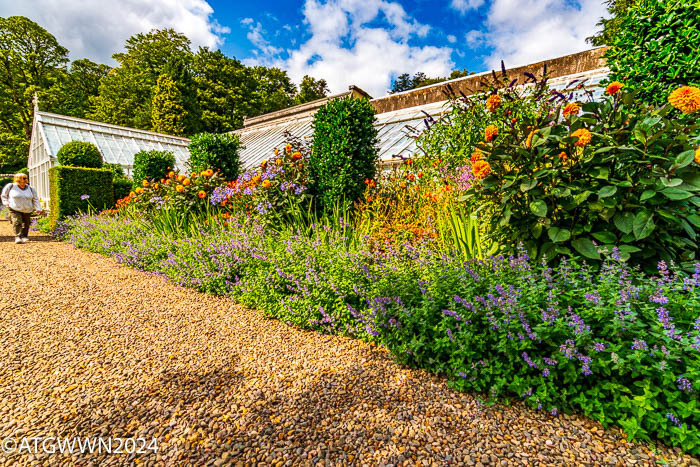
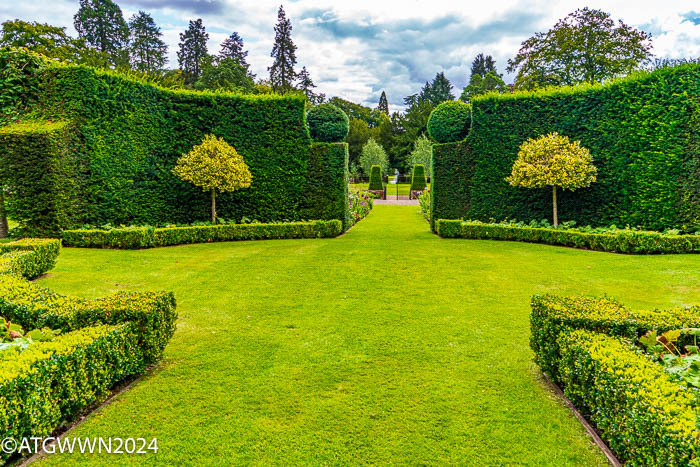
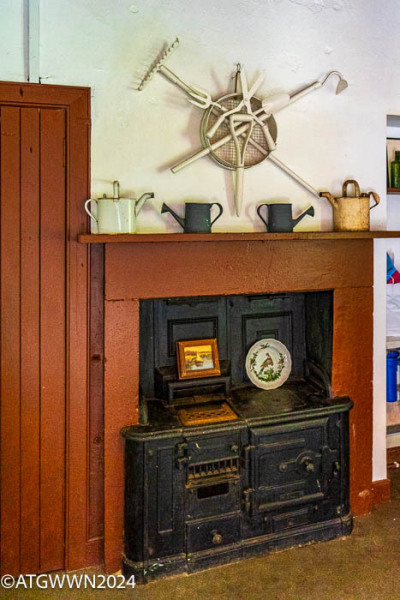
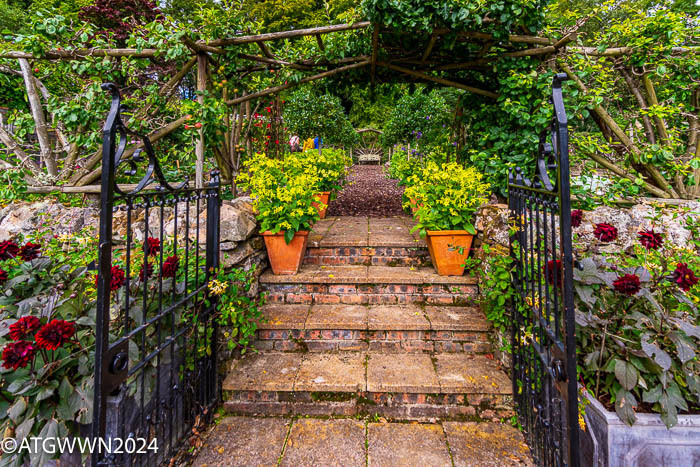
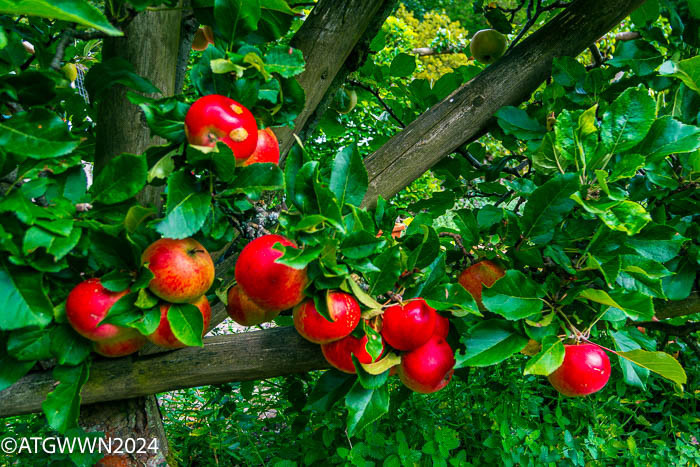
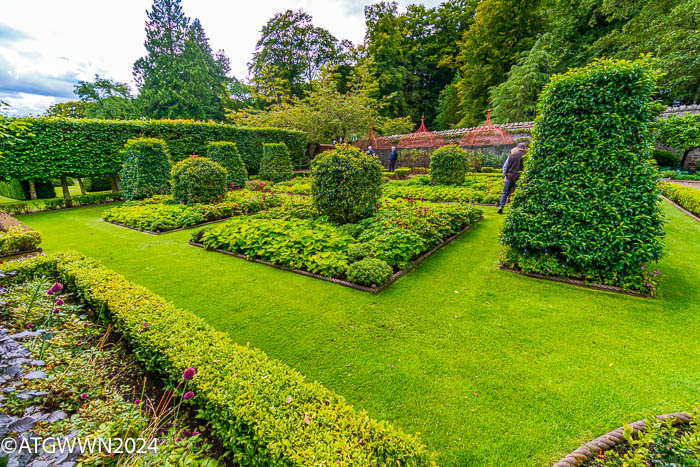
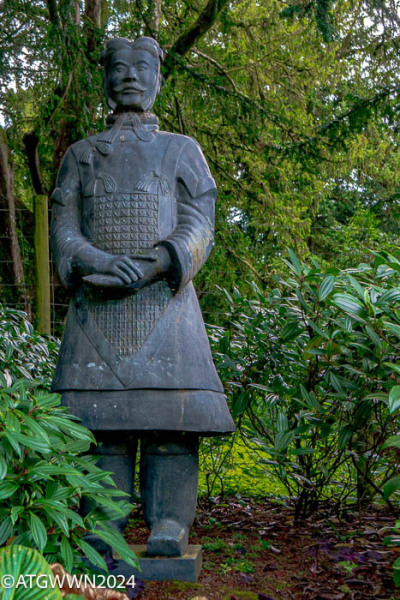
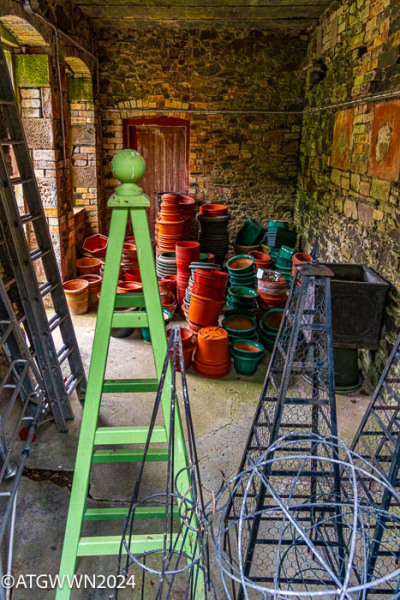

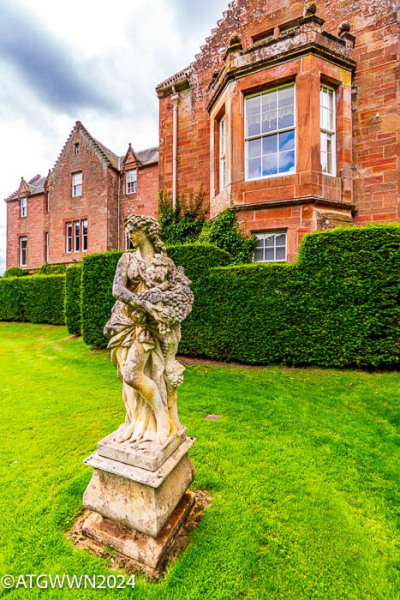
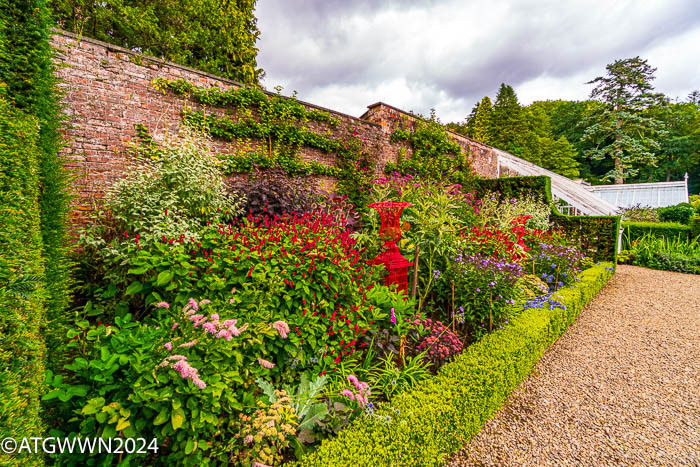
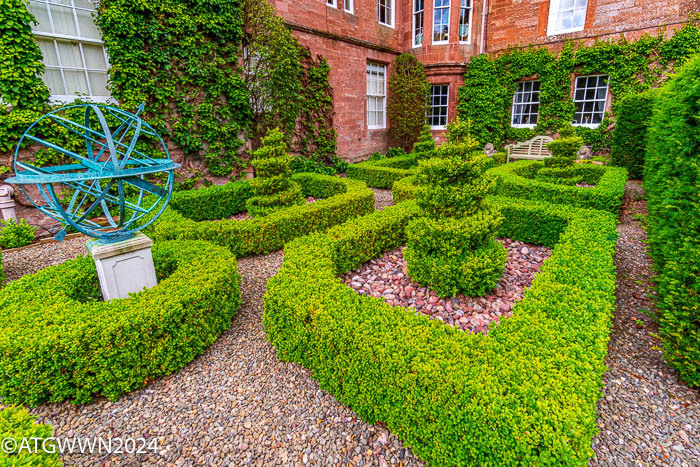
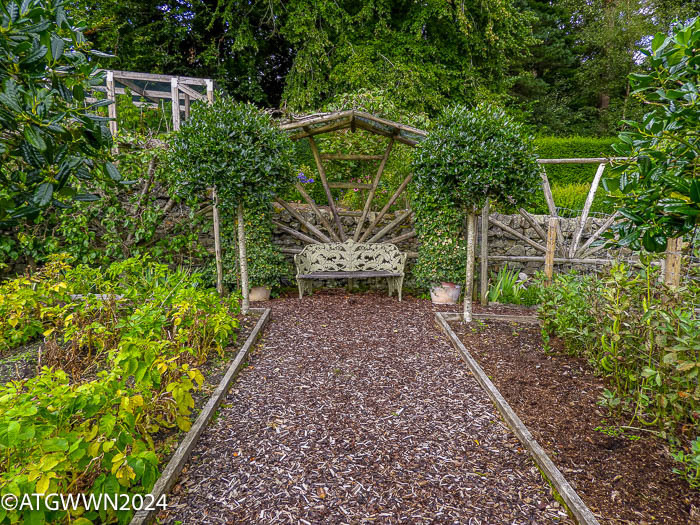
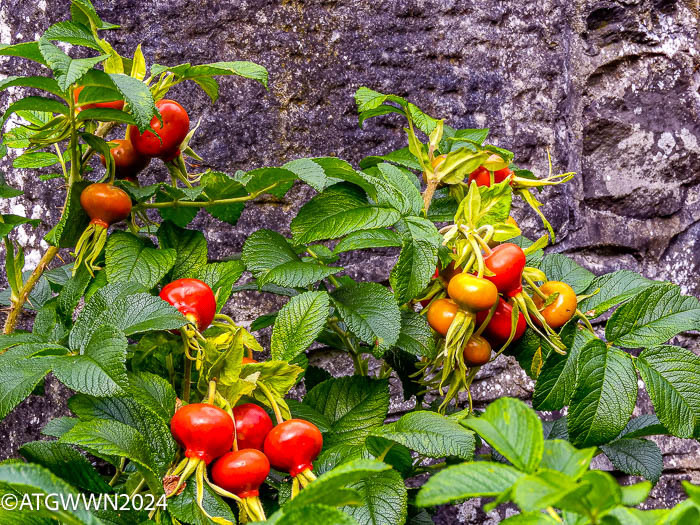
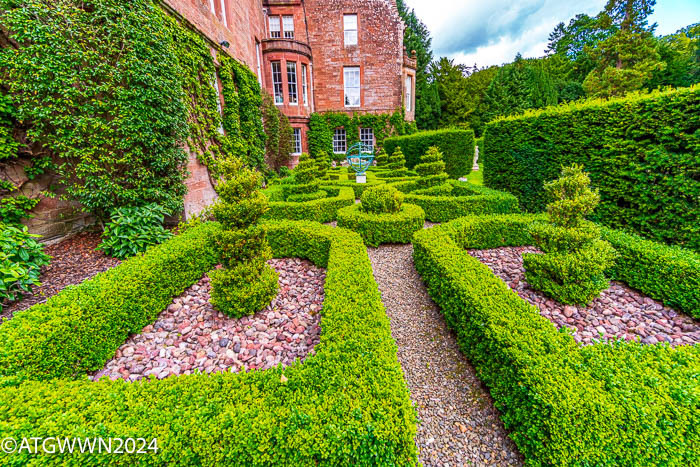
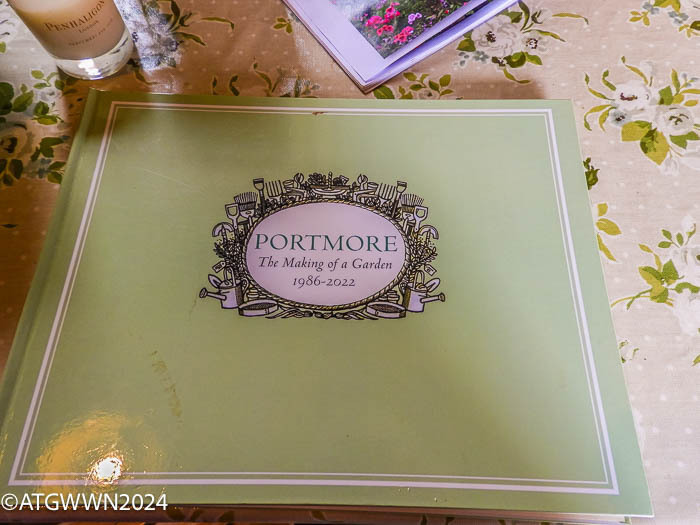
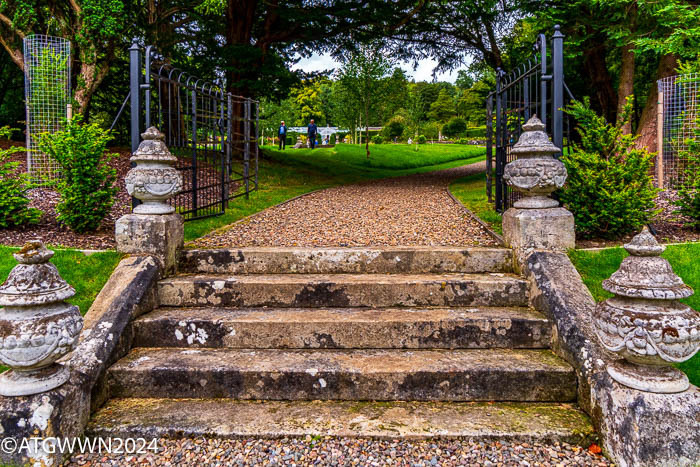
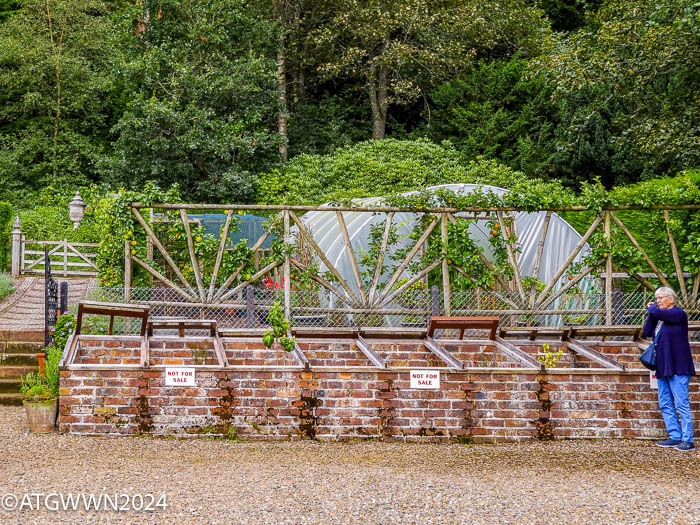
This is extraordinary! Thank you for sharing these beautiful photos!
Thank you for sharing this glorious garden,
The double herbaceous borders are swoon-worthy!
I love this one! Your writing and photos can calm anyone’s soul at the end of a busy day. Thank you always.
What a blessing you were at that garden at the perfect time! I need one of those “wire fruit baskets” large enough to cover my entire garden, LOL. Such a beautiful place, I hope it’ll still be in good hands in the future.